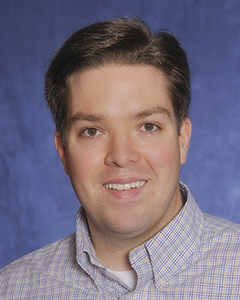
Brian HERMANN (USA)
Dr. Hermann received his Ph.D. in 2005 from the University of Kansas in the Department of Molecular and Integrative Physiology and then undertook postdoctoral research at the University of Pittsburgh in the Magee-Womens Research Institute and the Center for Research in Reproductive Physiology. He started his lab at the University of Texas at San Antonio in 2011 with support from a K99/R00 Career Development Award from the NIH. Research in the Hermann lab revolves around spermatogonial stem cells (SSCs), which are adult stem cells responsible for sperm production throughout life in mammals and are essential for male fertility. The Hermann lab investigates the basic biology of SSCs, methods to maximize their ability to produce or regenerate spermatogenesis, and potential therapeutic strategies to address SSC-based male infertility. Current studies in the lab employ mouse models to elucidate the fundamental molecular and cellular mechanisms driving the SSC fate with a heavy focus on the role of transcriptional regulation. More recently, the Hermann lab has focused this question to the single-cell level. In a large collaborative study, they recently reported the most comprehensive single-cell transcriptome evaluation of mouse and human spermatogenic cells to date. These data revealed novel pathways involved in regulating SSC fate and facilitated diagnostic approaches to define spermatogenic defects.
Abstract
Characterizing Human Spermatogonial Stem Cells at the Single-cell Level
Spermatogenesis is a complex and dynamic cellular differentiation process critical to male reproduction and sustained by spermatogonial stem cells (SSCs). In 1994, Dr. Ralph Brinster and colleagues transplanted mouse SSCs into the seminiferous tubules of infertile recipient mice and observed donor spermatogenesis that was competent to produce progeny. SSC transplantation has since become the gold standard bioassay for experimental assessment of SSCs and may also have application to preserve and restore male fertility after iatrogenic insults. We previously established feasibility of this approach in rhesus macaques, providing the essential proof-of-principle for clinical translation. However, obtaining sufficient numbers of autologous SSCs for transplantation is a major barrier to successful application of SSC transplantation in the clinic and may require propagation (or even derivation) in vitro. Regardless of the source of putative human SSCs, though, validation of their phenotypic and functional characteristics prior to transplantation is warranted. A number recently published and ongoing studies have characterized populations of mouse spermatogonia highly enriched or depleted for SSCs in an effort to derive genome-wide gene expression and epigenome phenotypes correlated with stemness. To similarly characterize likely human SSCs, where definitive knowledge of SSC identity is absent due to lack of an assay, we recently catalogued single-cell transcriptomes from >62,000 individual spermatogenic cells, including spermatogonia, from immature and adult mice and adult humans. This allowed us to resolve human SSC and progenitor spermatogonia based on comparison to gene expression patterns in subpopulations of transplantation-validated mouse SSCs and progenitor spermatogonia. These transcriptome datasets provide an information-rich resource for studies of SSCs, including the elucidation of putative novel regulators of SSC fate, which may be useful for diagnosing or treating male infertility, developing male contraceptive strategies, as well as defining the gene expression roadmap to be emulated in efforts to achieve spermatogenesis in vitro.
